|
|
Test Suite and Tests Case (template) This template is recomended for testers to help save time and reduce the number of test cases while keeping more coverage through the test data.
|
|
|
|
An Ingenious Solution Is your testing tool behaving like a problem child? Injecting your application with some discipline may be what's needed. Sometimes, spending a few weeks of development time on creating a solution can save you months of testing time. In this article, Linda Hayes explains how one company did just that!
|
|
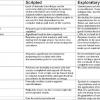 |
How to Choose between Exploratory and Scripted Testing Exploratory testing has gained increased recognition as a valid testing methodology. As a test manager or engineer you may be considering which approach to take. However, just as with other aspects of testing, such as automation, its application must be carefully chosen to ensure a successful outcome. In this article we examine the factors you need to consider when making that choice.
|
|
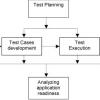 |
Reengineering Test Management The problems due to unstructured, decentralized test management can be solved by reengineering the test management process. A testing project starts by building a test plan and proceeds to creating test cases, implementing test scripts, executing tests, and evaluating and reporting on results. This article explains the goals of reengineering test management and how to achieve them.
|
|
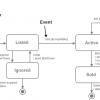 |
State-Transition Diagrams This is the fourth and last in a series of articles written to, a) introduce you to the most important diagrams used in object-oriented development (use case diagrams, sequence diagrams, class diagrams, and state-transition diagrams); b) describe the UML notation used for these diagrams; and c) give you as a tester a set of practical questions you can ask to evaluate the quality of these object-oriented diagrams.
|
|
 |
Class Diagrams This is the third in a series of articles written to a) introduce you to the most important diagrams used in object-oriented development (use case diagrams, sequence diagrams, class diagrams, and state-transition diagrams); b) describe the UML notation used for these diagrams; and c) give you as a tester a set of practical questions you can ask to evaluate the quality of these object-oriented diagrams.
|
|
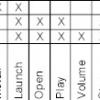 |
Streamlining the Test Process When building large test suites, one problem that crops up is test case redundancy. Test suites are especially vulnerable to this when many members of the test team are writing test cases. The likelihood of one engineer writing test cases that are somewhat covered by another engineer's is very high. This results in duplication of effort when executing the tests. I will present some strategies for avoiding this problem when constructing the test suite, as well as methods for maximizing efficiency with your test suite.
|
|
|
|
Brewing Trouble Admit it: When you're faced with a lengthy checklist for testing, you're tempted to skip steps. Some of the items aren't really necessary, are they? They might be so obvious that there's no need to include them in the list. In this column, Elisabeth Hendrickson offers some advice on constructing useful checklists that are brief but complete.
|
|
|
|
Automated Testability Tips Imagine a world where applications are written with automated testing in mind. Fantasy? Before you dismiss the idea, read this column. Linda Hayes makes some simple suggestions for designing for testability, including using unique names and adhering to class consistency.
|
|
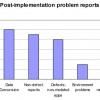 |
Eliminating Functional Defects Through Model-Based Testing Model-based testing is based on the premise that lowering costs and improving software reliability require a tight link between functional specifications and test cases. The test process should find problems in the specification of requirements and guarantee that the functionality called out in the specification is completely exercised during the testing effort. If testers can develop full-coverage test scripts directly from quality specifications, they can be highly confident that the functionality has been successfully translated into the delivered applications.
|
|











